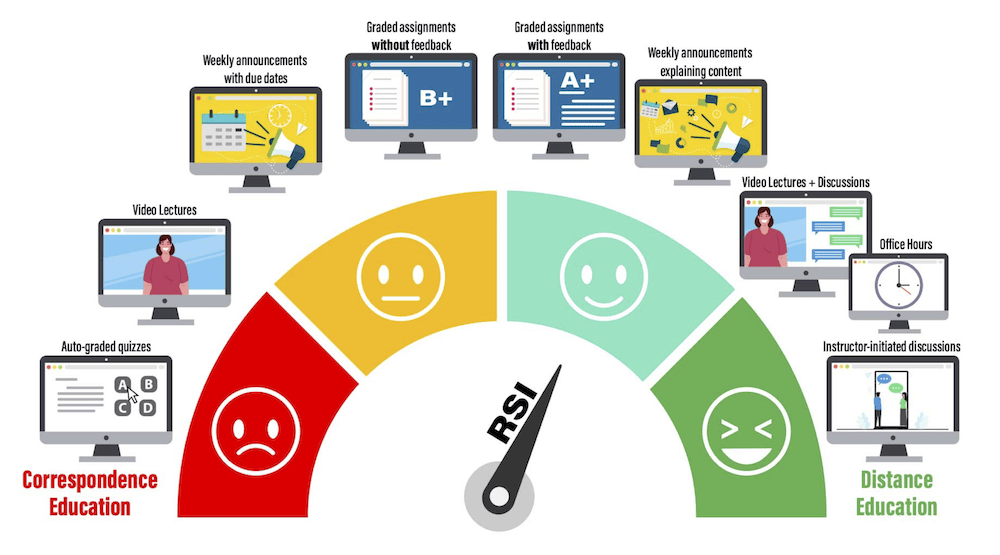Regular & Substantive Interaction in Online Courses
A new rule from the Department of Education, which went into effect July 1, 2021, requires that online courses ensure regular and substantive interaction (RSI) between students and instructors. The new rule also provides a clearer differentiation between Distance Education and Correspondence Education, with RSI being the primary determining factor. NC-SARA’s (2020) analysis of the new rule highlights:
“Clarity is provided on definitions of ‘regular and substantive interaction’ in distance education such that ‘regular’ is defined as taking place on a ‘predictable and scheduled basis’ and ‘substantive’ means students are engaged through teaching, learning, and assessment as well as at least two of these five activities:
- providing direct instruction;
- assessing or providing feedback on a student’s course work;
- providing information or responding to questions about the content course or competency;
- facilitating a group discussion regarding the content of a course or competency;
- or other instructional activities approved by the institution’s or program’s accrediting agency.”
RSI should be instructor-initiated; that is, instructors should be providing guidance throughout a course. This initiation of interaction should be regular, frequent, meaningful, and of an academic nature. RSI can be synchronous or asynchronous.
Distance Education vs. Correspondence Education
One of the most poignant features of the new rule is that Correspondence Education, as it is now defined, is not eligible for federal financial aid (SUNY, 2021). Distance Education is instruction delivered to students who are separated from instructors and supports RSI between instructors and students (as detailed above). Correspondence Education, on the other hand, includes interaction between students and instructors that “is limited, is not regular and substantive, and is primarily initiated by the student. Correspondence courses are typically self-paced.”

What Faculty Can Do
- Make a plan to interact meaningfully with each student.
- Lead discussions that invite students and instructors to share their ideas, share resources, and expand on others’ understandings.
- Set up regular announcements to go out automatically at key points in the term.
- Identify students who are struggling to meet objectives by observing discussions, assessments, or user activity, and reach out to them individually.
- Provide rich feedback on assignments rather than just using auto-graded quizzes.
- Provide students with opportunities to describe what is helping or hindering their learning in the course.
Contact the HSU Office of Online Education for more strategies and to brainstorm how to lead your online courses with Regular & Substantive Interaction.
Click here to view the full draft regulations.
WCET/SAN has shared its analysis here.
UPCEA has shared its analysis here.
CHEA has shared its summary here.

The OSCQR Rubric, Dashboard, and Process are made available by the Online Learning Consortium, Inc. (OLC – http://olc.onlinelearningconsortium.org/) under the Creative Commons Attribution 4.0 International License (CC By 4.0). To view a copy of this license, visit https://creativecommons.org/licenses/by/4.0/. The OSCQR Rubric, Dashboard, and Process were originally developed by the State University of New York, through SUNY Online, Online Teaching (https://online.suny.edu/onlineteaching/). SUNY Online and its logo are registered trademarks of the State University of New York.